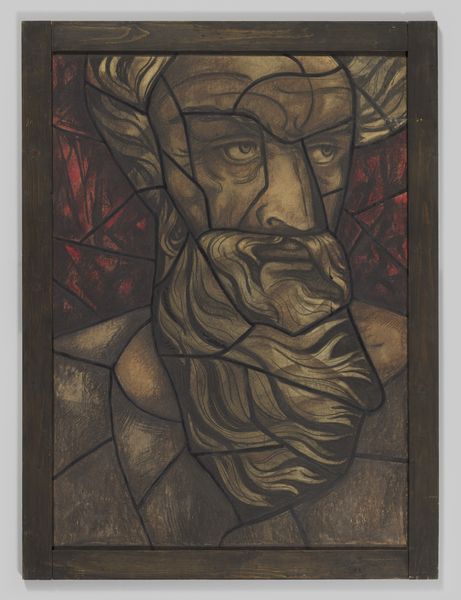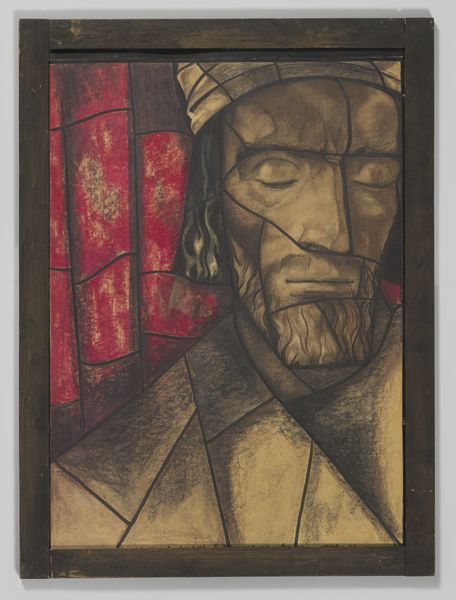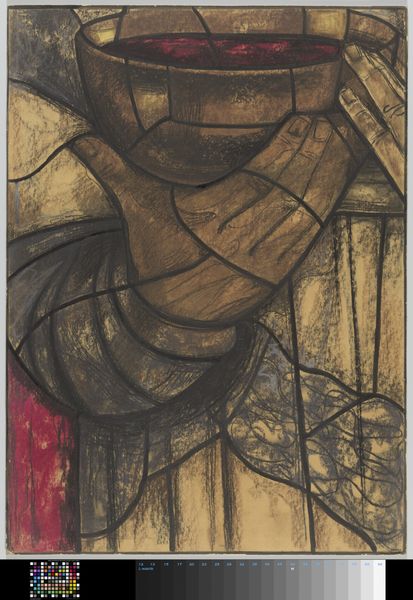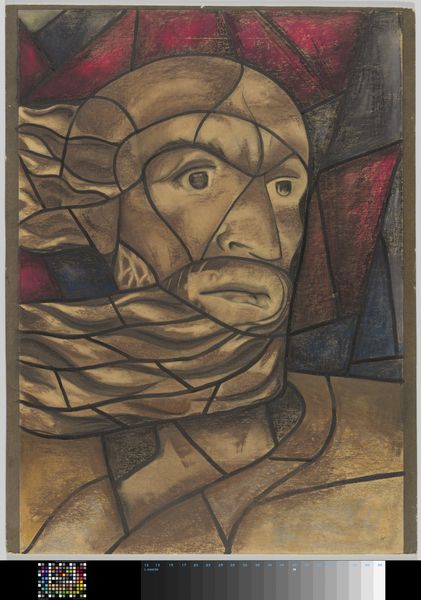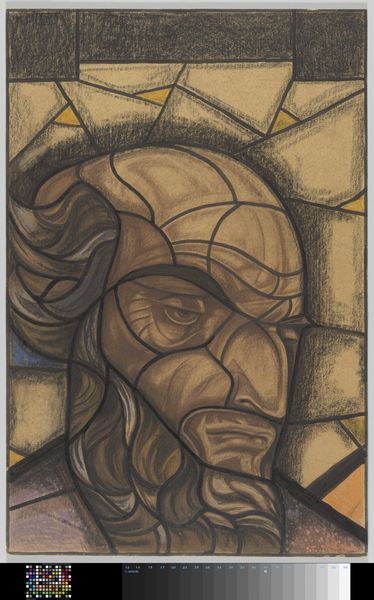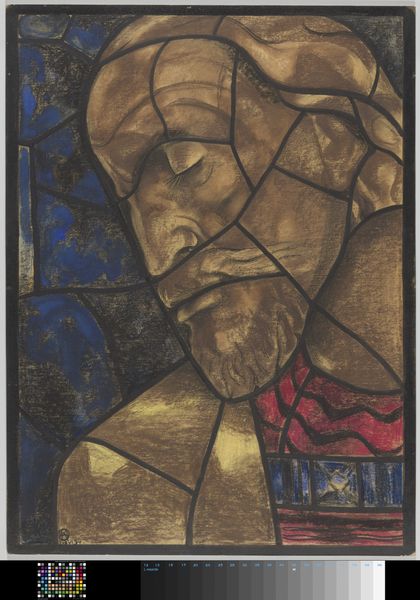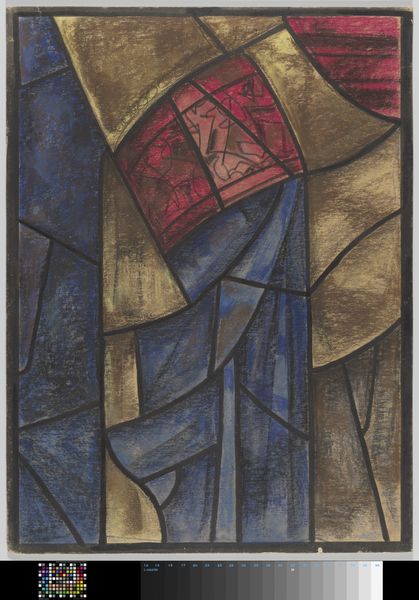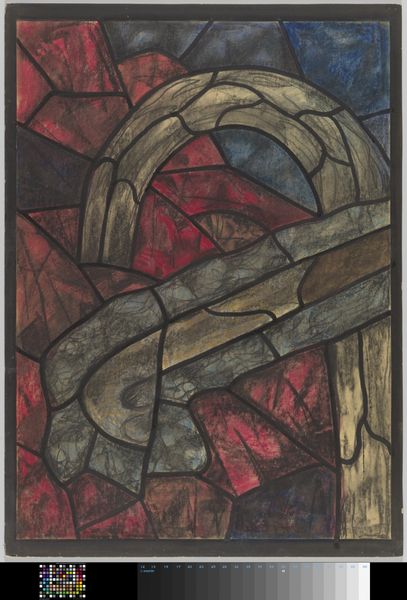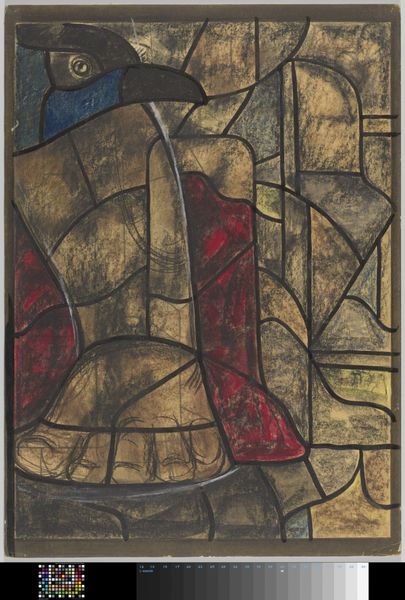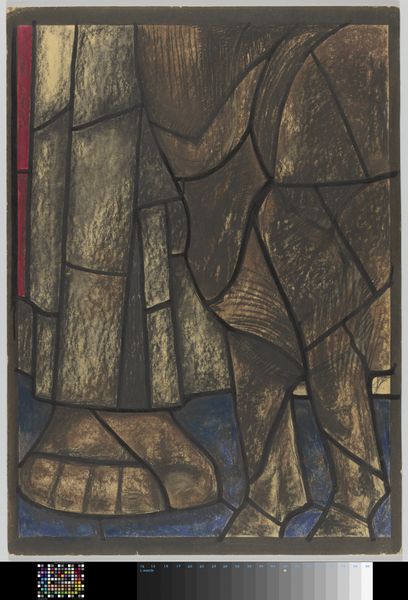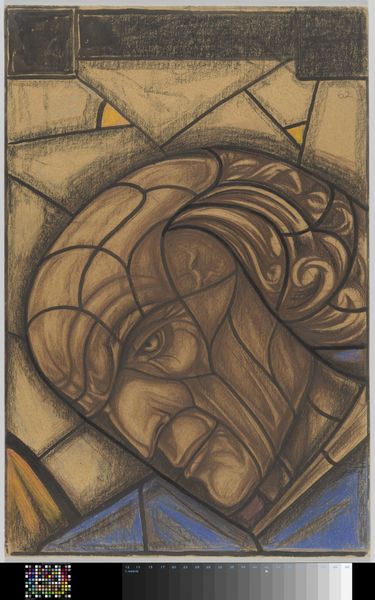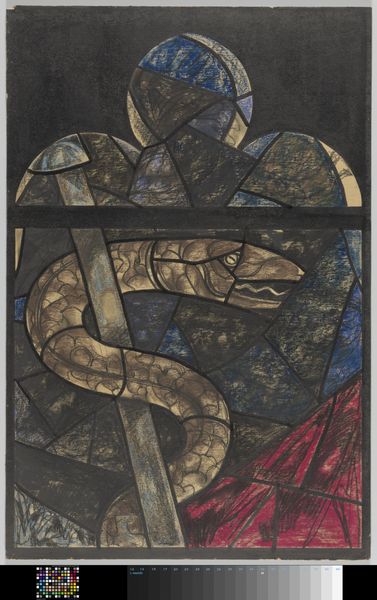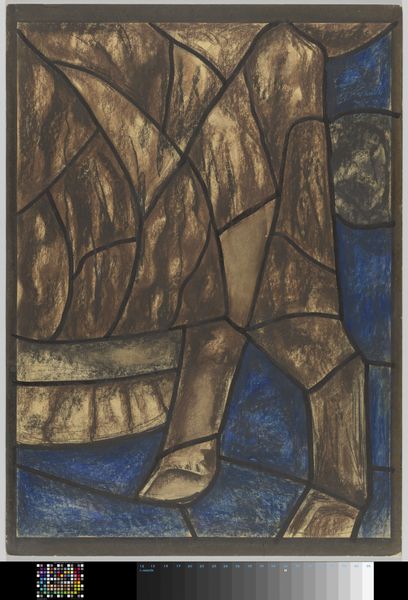
Ontwerp voor raam in het Noordertransept in de Dom te Utrecht c. 1934
0:00
0:00
drawing
#
portrait
#
drawing
#
figuration
#
mural art
#
portrait art
Dimensions: height 1065 mm, width 778 mm
Copyright: Rijks Museum: Open Domain
Curator: Well, he certainly looks like he’s seen better days. The drawing style evokes something… solemn. Editor: This is Richard Nicolaüs Roland Holst's design, dating from around 1934, for a stained glass window in the North Transept of Utrecht Cathedral. The artwork, rendered as a drawing, showcases Holst’s vision for a monumental stained glass figure. Curator: Stained glass, of course! It all makes sense now, the figure is divided by heavy black lines. One immediately picks up on the process; this isn't simply sketching; the materials are intrinsic to the visual language itself. Are specific pigments chosen to refract the Dutch sunlight a certain way? What did the artisans think when crafting this large work, and what did they do with Holst's original plans? Editor: Those are astute points. Thinking historically, the early 20th century in the Netherlands was a period rife with social and religious movements influencing artistic expression. The Dom in Utrecht, a historically Catholic cathedral that became Protestant after the Reformation, was often used as a place for statements about religious and national identity, but for whom would the image of this figure be legible? Who was meant to have access to the Dom? Was Holst interested in these historical issues? Curator: Exactly. Let’s get granular, then—how were these specific drawing materials obtained and processed in the 1930s? Were they locally sourced? Mass-produced? Were they influenced by economic conditions and trade routes of the time? The material and method carry immense weight, almost akin to an ethos embedded within the artwork. The red section there, resembling draped fabric—what kind of red pigment is that, and what were its connotations? Editor: Interesting, very interesting. And did the people commissioning Holst’s design have opinions about materiality? The decision to use this palette of colors and tones, even, plays into the building's history. Holst had an established role in artistic circles. His choices undoubtedly played into how the public interpreted his vision of the figure within the stained glass window in the Dom, especially amidst religious and cultural discourse in the interwar period. This portrait certainly makes you question your assumptions. Curator: Absolutely. The dialogue between material and method can uncover cultural undercurrents— revealing so much about the economic landscape and the artist's deliberate choices of creation. Editor: Yes, this brief but concentrated look certainly reveals Roland Holst's place at the center of cultural movements in his time, influencing our appreciation.
Comments
No comments
Be the first to comment and join the conversation on the ultimate creative platform.
